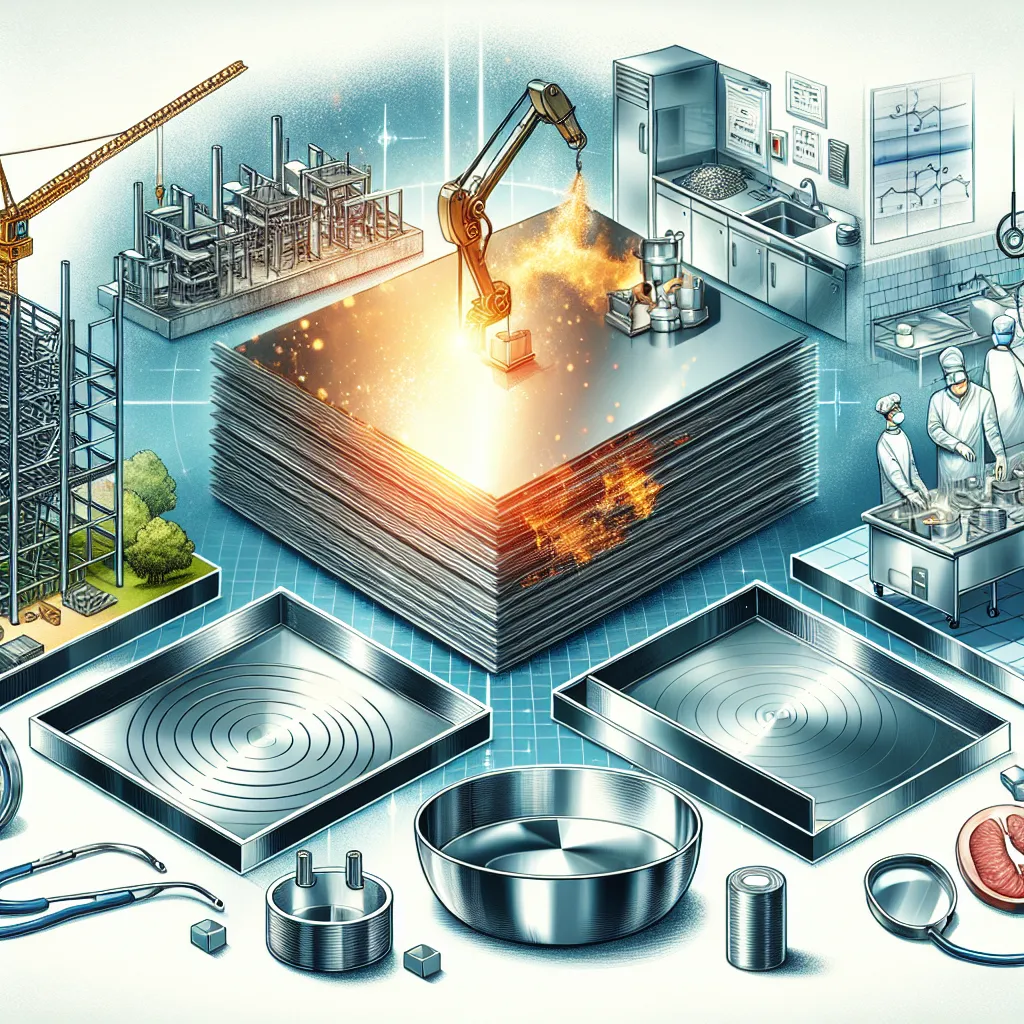The Versatility and Applications of Stainless Steel Plate
The Versatility and Applications of Stainless Steel Plate
Introduction
Stainless steel plate is a highly versatile and durable material that finds extensive use in various industries and applications. Known for its excellent corrosion resistance, strength, and aesthetic appeal, stainless steel plate has become a preferred choice for many engineering projects. In this article, we will explore the properties, manufacturing process, and applications of stainless steel plate.
Properties of Stainless Steel Plate
Stainless steel is an alloy composed primarily of iron, along with varying amounts of chromium, nickel, and other elements. These alloying elements give stainless steel its unique properties, making it suitable for a wide range of applications.
One of the most prominent characteristics of stainless steel plate is its exceptional corrosion resistance. The addition of chromium forms a passive oxide layer on the surface of the steel, which prevents it from rusting or staining. This resistance to corrosion makes stainless steel plate ideal for applications in harsh environments or those involving exposure to moisture, chemicals, or high temperatures.
Furthermore, stainless steel plate offers excellent strength and durability. It can withstand heavy loads, making it suitable for structural applications. Stainless steel plate also exhibits high heat resistance, making it ideal for use in applications that involve extreme temperatures.
Manufacturing Process
The manufacturing process of stainless steel plate involves several steps, including melting, casting, hot rolling, annealing, and pickling. Let’s take a closer look at each of these stages:
Melting and Casting
The first step in the manufacturing process is melting the raw materials, including iron, chromium, nickel, and other alloying elements, in an electric arc furnace. The molten metal is then cast into slabs or ingots for further processing.
Hot Rolling
The cast slabs or ingots are heated and passed through a series of rolling mills to reduce their thickness and shape them into plates. This process also enhances the mechanical properties of the steel.

Annealing
After hot rolling, the stainless steel plates are annealed to relieve internal stresses and improve their machinability. Annealing involves heating the plates to a specific temperature and then slowly cooling them.
Pickling
The final step in the manufacturing process is pickling, where the plates are immersed in an acid solution to remove any surface impurities, scales, or oxides. This process results in a clean and smooth surface finish.
Applications of Stainless Steel Plate
Stainless steel plate finds wide-ranging applications across various industries due to its exceptional properties and versatility. Some of the common applications include:
Construction and Architecture
Stainless steel plate is extensively used in the construction industry for structural components, such as beams, columns, and supports. Its strength, corrosion resistance, and aesthetic appeal make it an ideal choice for architectural applications, including facades, handrails, and decorative features.
Food Processing and Catering
Due to its hygienic properties and resistance to corrosion, stainless steel plate is widely used in the food processing and catering industry. It is used to manufacture equipment such as food storage tanks, preparation surfaces, and cooking utensils.
Chemical and Pharmaceutical Industries
Stainless steel plate is essential in chemical and pharmaceutical industries where resistance to corrosion and durability are critical. It is used for storage tanks, reactors, piping systems, and various process equipment.
Automotive and Transportation
Stainless steel plate is increasingly used in the automotive and transportation sectors due to its strength, durability, and aesthetic appeal. It is used for manufacturing components such as exhaust systems, chassis, and fuel tanks.
Energy and Power Generation
In the energy and power generation industry, stainless steel plate is used for various applications, including nuclear power plants, renewable energy systems, and oil and gas refineries. Its corrosion resistance and high-temperature strength make it suitable for these demanding environments.
Conclusion
Stainless steel plate is a versatile and durable material that offers exceptional corrosion resistance, strength, and aesthetic appeal. Its wide range of applications across various industries makes it a popular choice for engineers, architects, and manufacturers. With its excellent properties and the ability to withstand harsh environments, stainless steel plate continues to play a crucial role in modern engineering and construction projects.
